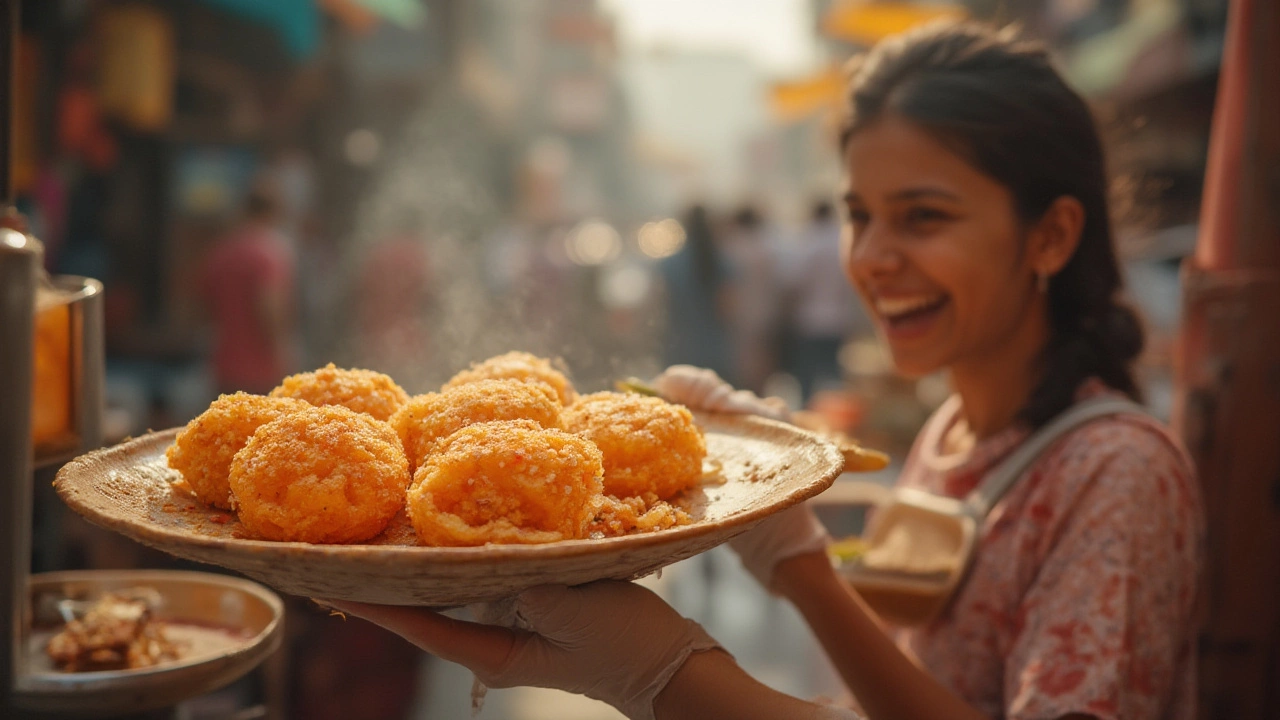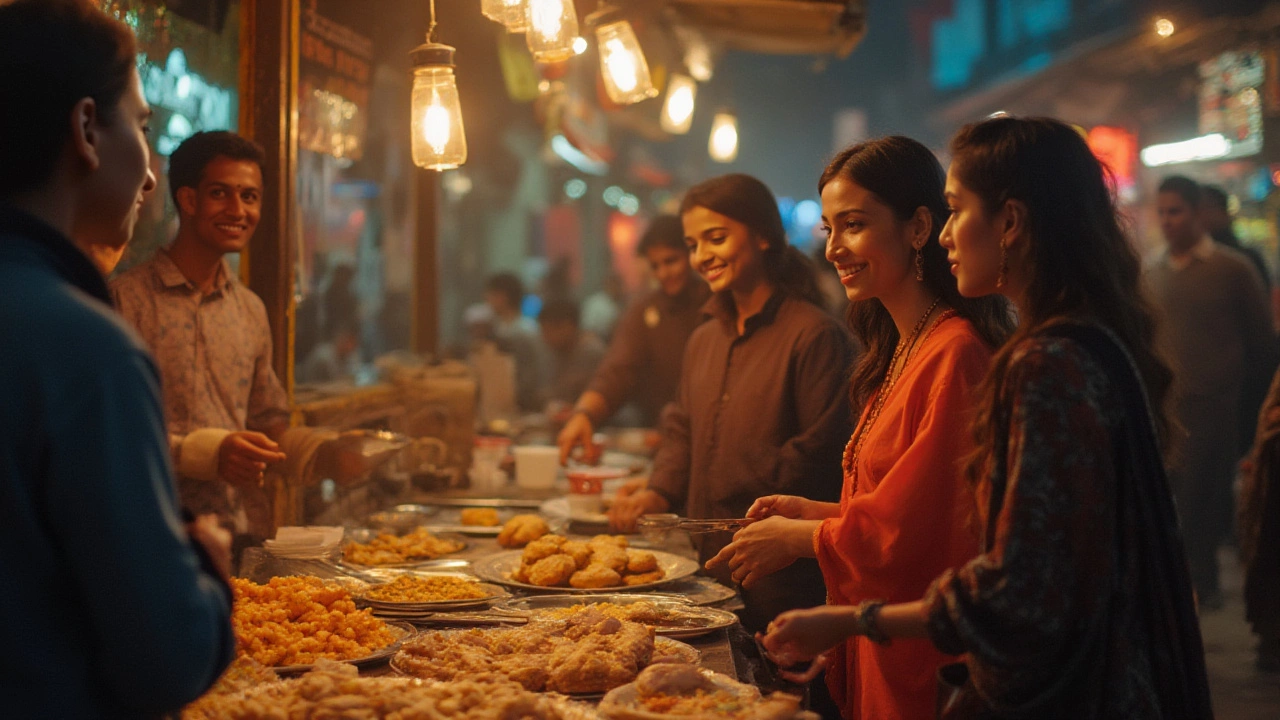There are some stories that always seem to circle travelers heading for India: tales of wild colors, incredible sights, and—yes—explosive stomach issues after eating street food. It's practically a rite of passage in travel blogs: posting about that epic pani puri session at a Delhi roadside stand, followed by a desperate search for the nearest restroom. But do you really need to avoid street food in India to stay safe, or is there a smarter way to enjoy spicy chaat, crunchy samosas, and sweet jalebis without risking your trip?
Why Is Indian Street Food So Famous (and Sometimes Feared)?
The magic starts in the hustle of the markets and the clang of ladles on hot iron skillets. Indian street food isn’t a hidden-off-the-menu curiosity—it’s in your face, sizzling and fragrant, with flavors you’ll never find in five-star hotel buffets. From Mumbai’s vada pav to Kolkata's puchkas, every region boasts specialties beloved by millions.
Why is it famous? In one word: freshness. Vendors make most items on-the-spot, right in front of you. The sheer variety is staggering: savory chaats with tangy chutney, pav bhaji loaded with butter, piping hot parathas, or melting lassi in a clay cup. UNESCO even recognized Indian street food as an “Intangible Cultural Heritage” in 2022 for a reason—it’s woven into daily life, not just for tourists but locals too.
Yet, this same street food scene also sparks fear among travelers. The term “Delhi belly” gets tossed around in travel groups so much it almost seems like a certainty. On average, about 30% of first-time foreign tourists in India experience a stomach upset, according to a 2023 report from the Indian Association of Travel Medicine. The culprit isn’t always street food itself but a combo of unfamiliar microbes, spices, and sometimes less-than-stellar hygiene standards. A single misstep in water quality, hand washing, or storage can flip a delicious local snack into a fast track to the pharmacy.
But here’s the thing—millions of Indians eat at these stalls daily and rarely get sick. The key difference? Locals know what to look for. Most health scares happen when travelers ignore a few basic safety signals. Is Indian street food really dangerous for tourists, or is it about learning which signs matter?
Understanding the Risks: The Real Deal Breakers
Let’s get honest—street food in India can be risky if you approach it like you would a food court in a sanitized airport. The conditions on the streets are just… different. You’re dealing with everything from heat to crowds, dust to sometimes-questionable running water.
Most of the risk comes from three things, backed by studies from the Indian Standards Institute in 2023:
- Contaminated water: The biggest enemy. Water used for washing, ice, chutneys, or in drinks isn’t always filtered. This is where E.coli, norovirus, or Giardia love to hide.
- Handling with bare hands: Watch to see if the vendor handles money, food, and plates all with the same hands and no hand washing in between. Germ transfer is real.
- Food sitting out too long: Stalls offering made-to-order, piping hot food are safer than those serving pre-made snacks that have sat out for hours. Rice dishes, dairy-based sauces, and meat snacks are especially risky if not handled right.
What about the food itself? Most Indian street snacks are deep fried or grilled, usually at high temperatures that kill bacteria. The problems blossom when you see crazily colorful chutneys or cut fruit sitting uncovered. According to a 2022 study in the Journal of Food Control, 48% of cut fruit sold on the street in Delhi contained unsafe bacterial levels—compared to only 16% in samosas or pakoras, because the latter are fried to order.
Are things getting better? Yes! After a government crackdown between 2017-2021, 58 major cities now require all street vendors to get a FSSAI food safety license, and random inspections are up 30%. There are QR codes at many stalls letting you see vendor ratings on the spot. Trusted chains or stalls marked "Clean Street Food Hub" have proven their hygiene practices through surprise audits.
Here’s a snapshot of food safety findings from a 2023 survey in five Indian cities:
| City | Random Inspections | Stalls Passing Hygiene Checks (%) | Common Issues Found |
|---|---|---|---|
| Delhi | 1200 | 62% | Uncovered food, no gloves |
| Mumbai | 900 | 70% | Lack of handwashing stations |
| Kolkata | 850 | 58% | Contaminated water use |
| Chennai | 750 | 77% | Unwashed produce |
| Bangalore | 940 | 81% | No food covers |
So yes, the environment is improving, but the risks aren’t gone. Being selective and observant is more important than avoidance.

Street Smart: How Locals Eat Street Food Safely Every Day
Locals have an almost sixth sense for which stalls are safe. It isn’t magic; it’s a set of street-tested habits anyone can learn. Want to eat like a Delhiite or a Mumbaikar without spending your vacation hugging a toilet? Try these tricks:
- Pick the busiest stall, not the emptiest. Steady crowds mean fast turnover, fresher food, and trusted flavor. Vendors with a line rarely serve yesterday’s leftovers.
- Watch preparation closely. Gravitate to stalls making things in front of you—like rolling piping hot parathas, frying samosas, or stirring up fresh lassi. Avoid those whose snacks look tired or sit under a limp cloth for hours.
- Go for fried or grilled items. Heat kills bugs. Pani puri, if assemblled with clean water, is a safe bet. But skip raw or cold stuff like chopped fruit, uncooked chutneys, or ice in drinks unless you’re sure of the water.
- Choose disposable plates, cups, or banana leaves. Reused metal or plastic can harbor bacteria. Most Indian street vendors now serve on paper or biodegradable plates—hugely better for hygiene (and the planet).
- Check for handwashing and gloves. If a vendor uses tongs, gloves, or anyone washing hands often, that’s good. If they touch everything with bare hands, maybe move on.
- Look for a food safety certification. The FSSAI blue sticker or a QR code is gold. You can scan and see inspection results at many urban stalls now (pro tip: locals do it too).
- Observe the oil and the station’s cleanliness. If the oil is dark and the frying pan grimy, that’s your sign to try next door. Ditto for sauce containers, chopping boards, or a general air of chaos.
Here’s something that might surprise you: Travelers from Australia, the UK, and Germany reported 57% fewer stomach upsets in 2024 when they followed just three rules: piping hot, busy stall, and no raw chutneys. Talk about easy wins.
What about the legendary spice levels? Indian street snacks can be fiery, but they don’t make you sick—just maybe reach for a sweet mango lassi to calm your mouth.
Tourist Survival Kit: Must-Know Tips for Eating Street Food in India
Let’s get real—no one wants to spend the Taj Mahal tour doubled over from a risky chaat. The secret weapon? Preparation and smart choices. If you look at the habits of seasoned travelers or foodies who spend months eating their way through India, you’ll spot some common strategies.
- Pack or buy a local hand sanitizer. Use it before eating, after handling money, and after shaking hands. It’s not paranoia, it’s basic self-defense.
- Stay hydrated—but with bottled or filtered water only. Don’t trust tap water. Even locals buy filtered water from reputable brands. Watch for sealed caps and don’t order drinks with ice.
- Take it slow on day one. Your gut isn’t used to the local flora just yet. Indian-style yogurt (curd or lassi) actually helps, so reach for it. Probiotics before you fly in also reduce your risk of stomach upsets, according to researchers at the All India Institute of Medical Sciences.
- Bring meds. Your pharmacy at home will have over-the-counter antidiarrheals and oral rehydration salts. Bring a packet—better to have and not need than the other way around.
- Travel with friends or join a food tour. Local-led tours pick tried-and-tested stalls and offer behind-the-scenes info, so you can eat confidently and discover hidden gems.
- Learn the names of common street snacks. Chapati, chaat, dosa, pav bhaji—if you can say it, you can ask for it. Many vendor menus aren’t in English, but pointing and smiling works everywhere.
- Check for local recommendations and recent reviews. People post online about their latest street food finds on Google, Zomato, Reddit, or Insta. Follow the chatter and you’ll spot patterns—clean, famous, and safe hotspots.
Got a sweet tooth? Jalebi, gulab jamun, and kulfi are hard to resist. Stick to those made (and preferably fried) before your eyes. Dairy-based sweets can cause trouble if left out, so fresh is best.
Respect local meal times; food is freshest at breakfast or early evening, not in the heat of the afternoon when it’s been sitting out. If you’re wary about meat, go veg—about 35% of Indians are vegetarian, so you’ll eat like a local and lower your risk. And if your gut rebels after all these precautions? Don’t panic. Most bugs resolve in a day or two. Drink fluids, rest up, and if it’s severe or lasts more than 48 hours, see a doctor (they’re generally very inexpensive and helpful in India).
Trying street food in India is about more than flavor. It’s part of joining the fabric of the country—sharing jokes with other eaters, watching the artistry of the street chefs, and gathering courage for "just one more bite." You don’t need an iron stomach, you just need some basic smarts, curiosity, and an appetite for adventure.
